Panchakarma – is seen as a treatment as well as relaxation, and it flushes out several toxins hidden in our body, mind and soul. The holy month of Karkidakam when our body is in rest and monsoon season, it’s the best time for Ayurvedic treatments such as Panchakarma. Doing Panchakarma for three or four years continuously give better results to body, reduces body and joint pain and relaxes mind and soul as well. And Karkidakam (July-August) is the best season to choose for this treatment which may last up to three weeks. Through this column, I would like to present in detail different modules of Panchakarma, its treatment methods and end results. I have also included my personal experiences while preparing this column. Also read: Kalari Marma Chikitsa in the month of Karkidakam

Main objectives of Panchakarma
India’s own Ayurveda is a great store of so many remedies for our health as well as mental issues. Ayurveda includes certain time tested and effective specialized therapy methods which give solution to almost every problem we face, either stress related or health related. Ayurvedic therapies are also known for strengthening our immune system and make it effective to fight against diseases. Now even foreigners are showing deep interest in Panchakarma treatments, which gives fewer side effects comparing other treatment methods.
The treatment effectively cleans our body and acts as a rejuvenation process, and protects our cells and tissues from aging also. But the treatment gets full effect only if instructions and diet are strictly followed and full rest given to body and mind. So the treatment time and its following resting can also be taken as a relaxation period, and it gives full solution to our body pain, neck pain, joint pain etc if the treatment is given enough seriousness. It also reduces obesity and give full relaxation to body parts.
Panchakarma literally means five specialized therapies
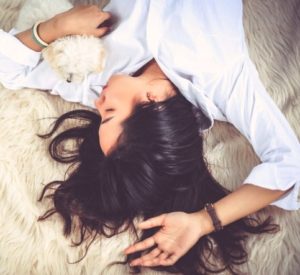 They are listed as follows.
They are listed as follows.Vamana Karma – Emetic therapy
Virechana Karma – Purgation therapy
Vasthi – Enema containing decoction of drugs
Raktha Mokshanam – Blood-letting therapy
Nasya karma – Nasal therapy
Preparatory therapies are also used to prepare patient’s body for treatment. Snehana Karma – Oleation therapy (both external and internal) and Swedana Karma – Formation therapy belong to this category. It’s not necessary that all these therapies will be done for every Panchakarma treatment. The physician takes decision on which therapies are to be followed based on the conditions of the patient, and it may vary from person to person. It’s calculated based on the vitiation of Doshas too.
Normal procedures done in a full-course Panchakarma treatment
Sometimes, medicines may be started prior to the treatment so as to prepare the body for the action. Special bed called Thaila droni made of wood (sometimes fiber) is used for treatment, and the patient has to lay down for the whole massaging process. Abhyanga – The oil massage, Virechana – Purgation, Dhara – Pouring oil on forehead continuously, Sweda – Sweating, Kizhi – massage using hot bundle and finally Vasti – Enima treatment. The order of treatment procedures many slightly differ at different Ayurvedic hospitals or as instructed by physician. Also treatment is suggested by doctor based on the vitiation of three Doshas (Doshams) – Kapha, Vata and Pitta.
Treatment will be disrupted if the patient has periods or other physical ailments like fever or fatigue. Treatment will be continued once normal condition is restored. I would like to describe each method apart from a few more procedures.
Oil Massage – called Abhyanga in Ayurveda
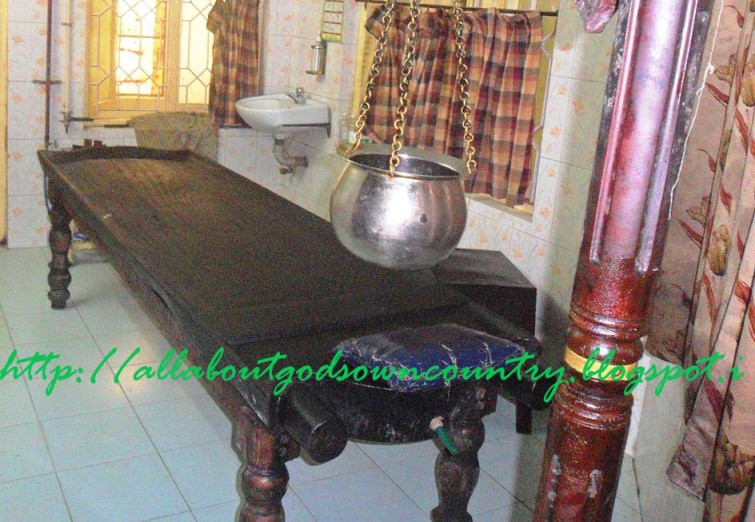
Wooden bed (Thaila Droni) used for Panchakarma Treatment
Medicated oil is used for the purpose. That means doctor prescribes which oil is needed for treatment, and the same oil is used throughout. Usually it will be a combination of two different oils. Dhanwantharam Thailam (oil), Narayana Thailam and Kottamchukkathi Thailam are some of the oils used for this purpose. These oils are mostly used as relief to pain and to treat Vata disorders. Based on the intensity of pain and other disorders like rheumatism, oil may differ. Total treatment time is up to one hour.
Therapist heats the oil, apply on the body of the patient and massage it for nearly 45 minutes. Usually Abhyanga is done for continuous 7 days. Oil massage gives better results to body pain, swellings etc. Due to lack of exercise and physical work, our joints and other body parts may swell causing pain and Abhyanga is an instant remedy to these disorders. It is followed by Kizhi treatment, which gives full effect of the Ayurvedic treatment.
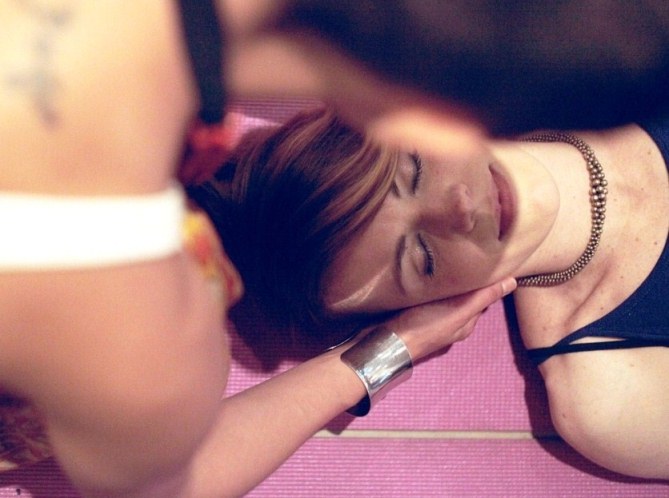
Starting off by applying hair oil
After massaging, therapist may instruct to do a few simple exercises to stretch your muscles, neck joints, knees etc. The patient needs to take bath in hot water and lay down for at least 20-30 minutes to give rest to the body after treatment. Major benefits of Abhyanga include – lessens rheumatic complaints and pains, improves complexion, vision and gives sound sleep also. It is also a natural remedy to many skin diseases.
Very often patients do special massage only, if they want to skip the whole Panchakarma treatment due to time issues. While doing so, pressure is given to vital points like palm and sole after applying hot oil on the whole body. Special Massage (Vishesha Abhyanga) is also taken as a treatment and its added benefits are – cure to sprain and muscular dystrophy and improves body strength also.
Bashpa Swetha or Steam Bath
Steam Bath is quite common in beauty therapies too, which flushes out dirt of the skin pores and make it clean and fresh. Bashpa Swetha, simply called Swetham is done, as a part of Panchakarma treatment and also for relaxation once in a while. Medicinal herbs are boiled in water and it’s used as steam for this treatment. Oil is applied on the whole body before the steam bath and no massaging done this time. The patient needs to be seated inside wooden steam bath with head outside, and steam will be passed to the container. The therapist may ask him to take a few breaths of the medicinal steam too. As time passes by, temperature inside the steam bath rises. Body needs to sweat in the steam to wash away fats and impurities of skin. The patient may need to sit around 20-30 minutes or more. Hot water used to bath will also contain medicinal herbs. After bath, patient needs to take rest.
Often done as a preparatory procedure, it’s usually conducted just before Kizhi treatment starts. It can reduce low back ache and relieves stiffness to body too. It gives unique refreshment to body and soul and hence has many advantages. Usually the patient is asked to sit inside the steam bath for this treatment. In rare times, a bath tub may also be used and the patient will be asked to lie down during the Swedam process.
Purgation known as Virechana in Ayurveda
Virechana is one of the most effective treatments to eliminate toxins of the body. Majority of pitta related toxins are flushed out by this method. Certain drugs (usually in the powder form mixed in water) will be given to patient in empty stomach to stimulate bowel movements, and he needs to drink hot water only in frequent intervals. The cleaning is carried out in small intestine and other pitta zones and toxins are eliminated through feces.
Patient may be asked to take some light food mostly rice in fluid state (Kanji) at around 10 am. He may feel tired throughout the day. As it’s a treatment for elimination of toxins from body, some light and easily digestible food should be taken. Doctor also suggests avoiding heavy diet, tea, oily food etc to get better results of Virechana. This process also makes patient’s skin shiny, helpful in curing skin disorders and jaundice. It also reduces spleen enlargement.
Drugs are prepared from roots and fruits of certain medicinal herbs and hot water acts as stimulant for fecal discharge. It may turn fluid after a few bowel movements, and patient may feel stomach pain and tiredness.
Kizhi – Of different types
Kizhi is a great remedy to pain and helps to reduce weight also. It can bring your body to good shape, and is usually done after Abhyanga. Kizhi also takes 7 days and total treatment time is up to one hour every day. Similar to Abhyanga, it takes 45 minutes for treatment and another 15 minutes added to take a bath in hot water. Hot water reinforces the absorbance of medicinal oils to the body.

Iron pan used to heat kizhi for treatment
Kizhis are of different types, and it may differ as per treatment. Kizhis are included in Fomentation therapy treatment methods. Usually three kizhis will be used for 7 days treatment. Two kizhis will be used two days each, and the last one for three days. A kizhi can never be used after three days, even if it’s unused in between. Some of the commonly used kizhis are as follows.
Choorna Kizhi – This Kizhi is seen as a good remedy for obesity, rheumatoid arthritis and varicosity (Varicose veins). Certain herbal powders are used for this kizhi.
Dhaanya Kizhi (Grain Kizhi) – Kizhi is made using herbal seeds. Seeds are powdered before they are bundled into Kizhi. It’s a good remedy for swelling and pain of joints.
Navara Kizhi – Navara – a type of rice is used for this Kizhi procedure. Bolus of navara rice cooked in milk is used, and its procedure is different from Choorna Kizhi and Dhaanya Kizhi. Patient is made sit over droni before oil is applied to body. Here meditated milk is used instead of oil. Massaging is done in downward direction and later the paste is removed slowly from the body. It’s a great remedy for joint disorders such as Polyarthritis and Osteoarthritis, and degenerative and muscle wasting disorders.
Patrapotala Sweda – A fomentation therapy where is kizhi with herbal leaves is used, dipped in warm medicated oil and used to perform Kizhi treatment. It’s done as a treatment to Sciatica, Osteoanthritis and Polyanthritis.
Valuka Sweda – Here heated sand is used to prepare Kizhi. Kizhi is heated in an iron pan before massaging the patient. It’s a remedy to Rheumatoid Arthritis.
Usually Kizhi is done for 7 days after Abhyanga. But for those who can’t find enough time (2 weeks) for both these treatments continuously, both these treatments are done together. If so, Abhyanga will be done for 45 minutes, followed by Kizhi for 15 minutes and hot water bath is also taken.
Both Podi Kizhi (Powder Kizhi) and Ila Kizhi (Leaf Kizhi) are used for this treatment. For Ila Kizhi, leaves are cut into small pieces and fried in medicated oil along with coconut scrapes and lemon. A few more variants like Mutta kizhi using eggs are also done here for extreme cases.
Dhara – For meditation and peace of mind

The Dhara Pot used for Dhara treatment. It may be earthen or metal
Usually one therapist and one assistant will be present. Dhara is also done aside Abhyanga or Kizhi treatment to save time. If so it takes almost two hours to complete one-day treatment. Normally body oil massage is done for 15 minutes for Dhara treatment. If it’s done along with Abhyanga or Kizhi treatment, this oil massage will be skipped.
Dhara is normally done in two ways – Taila Dhara using oil and Takra Dhara using buttermilk which is more expensive and effective too. A Dhara band is needed to tie across the forehead during the procedure. It prevents meditated oil/better milk from flowing to eyes. Hair oil is also applied every day.
A dhara vessel is hung just above patient’s forehead at 6-8 inches height. It has a hole at the buttom through which medicated oil or buttermilk is poured to patient’s forehead by therapist. He/she moves the pot to and fro using hands so that oil or buttermilk reaches forehead of patient in uniform motion. The flow of oil or buttermilk is never disrupted, and an assistant pours it continuously to the pot. The flown buttermilk/oil is collected, reused and poured continuously into the pot. As time passes by the patient can feel himself relaxed and chilled too. Dhara milk/oil will be exchanged every day.
Taila Dhara – Here meditated oil is used for doing Dhara. It helps to nourish the nervous system, reduces facial palsy and hemiparesis, and also induces vasodilatation which promotes oxygen supply to brain cells.
Takra Dhara – Meditated buttermilk is used for doing Dhara. Its benefits are multi-fold. It’s an excellent remedy to reduce stress and hypertension and improves eye vision too. An excellent remedy to chronic insomnia, head ache and neck pain, it also reduces burning sensation of palms and soles. It’s an excellent relaxation treatment for those who spend long hours before computer screens in sitting position.
Doctor advises the person to take rest after bath in hot water. Head wash is avoided for the 7 days, and for better results, avoid reading, watching television and using computer screen maximum. i.e. Give maximum result for eyes during the treatment period of 7 days.
Pizhichil – A part of Panchakarma Treatment

Thaila droni – With a hole at head position to collect oil and medicated dhara oil during treatment process
It’s done in extreme cases where the patient suffers from extreme pain. It’s expensive comparing other treatment methods. Luke warm oil is poured over the body repeatedly during this treatment. Pizhichil literally means squeezing. Yes meditated oil is squeezed over patient’s body using a towel after dipping in hot oil. It’s an effective treatment to reduce pain and improves blood circulation.
Oil massage is done first. Then the patient is asked to sit on Thaila droni, the bed used for treatment. Two therapists are needed for this procedure. A cloth is used which is dipped in oil, squeezed using right hand of both therapists and massaged simultaneously using left hand in the downward direction. Like other treatment methods, patient is asked to adopt 7 standard positions during the procedure. Excess oil is cleaned off before the final bath using hot water.
This treatment can improve skin texture, smoothness and luster. Strengthening of muscles and tissues thus delaying aging process and a great remedy to nervous disorders and degenerative disorders are other major benefits.
Vasti – Similar to Enema of Medical Science
Vasti in Sanskrit means bladder and this treatment is of two types – Taila Vasti and Kashaya Vasti. Thaila Vasti in small quantities is given for the first three days followed by the main Kashaya Vasti. Patient is asked to take deep breath before the treatment and to lay in the same posture for a few minutes after Vasti. The fluid strengthens and nourishes the colon if the patient is able to retain it as much as he can. The discharged fluid contains many toxins and cleans colon.
Taila Vasti is normally given in small doses called Matra Vasti, and medicated oil is used for this purpose. It’s normally done as the preparatory procedure to Kashaya Vasti. It is a remedy to constipation and piles, acts as a good vitalizer and helps in the retention of flatus and urine too.
Kashaya Vasti is done using herbal decoction on an empty stomach. Within 15 minutes, full fluid along with toxins will be discharged along with excreta. It’s good remedy to several abdominal disorders and vata disorders (one among the three doshas) too.
A few more treatments associated with Panchakarma
Let me introduce to you a few more Ayurvedic treatments associated with Panchakarma.
Avagaha Sweda – Use to give mild fomentation to the patient. Oil massage is done first, and the patient is made seated in a tub filled with medicated decoction. It gives relief to low back ache, rheumatic disorders, hernia and haemorrhoids.
Prushta Vasti – Luke warm medicated oil is retained in the lower back region for a specific time and a light oil massage is also given after the procedure. It’s used as treatment for sciatica and inter vertebral disc prolapse.
Nasyam – This treatment is used for head and neck disorders. Diseases associated with head and throat regions are also cured. Medicated oil or powders are applied through nostrils for this treatment, and is done in three stages. Face and neck regions are gently massaged first and the patient is lied down with his head slightly bend back. Nasal drops are given to nostrils and a soft massage to throat, cheeks and forehead is done as the end procedure. Patient is asked to gargle luke warm water after treatment. It’s also given as a treatment to epilepsy and facial palsy and also cervical spondylosis.
Akshi Tharpana – It’s a treatment given to eyes using luke warm medicated ghee. Supine position should be adopted by the patient. At first a dough using black gram is made around the eye socket and medicated ghee is retained for some time. The patient needs to blink his eyes slowly and after treatment, it’s cleaned off. It’s a remedy to several eye disorders like diabetic retinopathy, retinitis pigmentosa and macular degeneration.
Udwarthanam – Certain powdered medicines are used for body massage in upward strokes. The powder is heated in a pan before use, and the patient needs to adopt 7 standard positions. He has to take a hot water bath after treatment. It’s done to increase body complexion and reduce body weight. It also increases blood circulation and give physical stability and lightness to body too.
From my experiences
I have done complete Pancharkarma treatment twice and Abhyanga once. I took treatment to reduce obesity and as an ailment to joint pain and body swelling. It gave amazing results also, and made me feel weight-less and pain-free. During my first course of treatment, I was prescribed Abhyanga, Virechana, Dhara, Sweda –, Kizhi and Vasti. Vasti part was not done during second course. Yes, during first course a patient may be asked to do one complete cycle, and certain procedures will be skipped during his each treatment course later.
It’s suggested to do this treatment annually for three years continuously to give better results. In an age where we give less time and effort to physical exercises, Panchakarma treatment can help you to detoxify your body and soul, and flush out toxins and fat. It rejuvenates our cells and grants them a new life.
Care after treatment
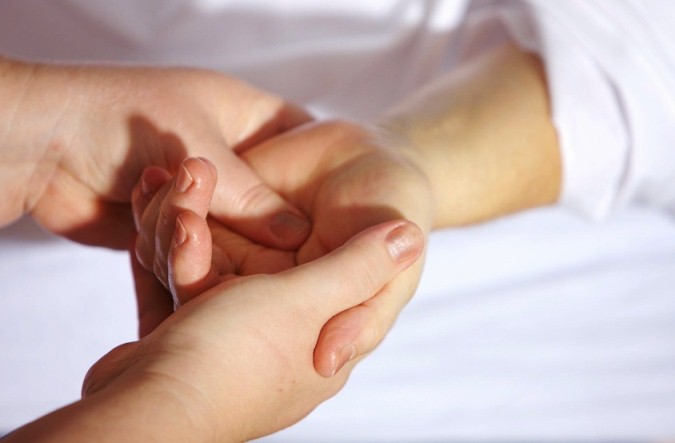
The most important fact is – the treatment will get full advantages only if the patient stays relax, free of all tensions and complete rest to the body. Except small walks, body should be given complete rest during the treatment days and resting period too. After each treatment and hot water bath, patient should rest on his back for at least 20-30 minutes. Also nap during day is also strictly prohibited and it may result in swelling too.
If a patient takes a treatment for 20 days, he should give his body full rest 20 more days after treatment. He may feel certain discomforts and also excess pain when the treatment starts and as it goes on in the continuous days because full stress and tore is given to body parts as a part of treatment. But after resting period, the body returns to a great energetic mood to work for next one year or long period.
Ideal Period for Panchakarma Treatment
As per Malayalam calendar, the last month of the year – Karkidakam is regarded as the ideal month for treatment. It usually falls between mid-July and mid-August when monsoon is at its full swing. Read more about the significance of Karkidakom month.
This month is regarded as a resting month of Malayalis, most prone to diseases and hence chosen for many Ayurvedic treatments too.
Hot water bath and hot oil massage – both are must for Panchakarma treatment to get good results, and monsoon is the best season for hot water bath and oil massage, definitely. Also our body is idle during this chilled month and is easy to prepare it for treatment. And most importantly, treatment gets full effect when meditated oil is well absorbed to our body cells. As our body sweats less during monsoon season, oil will be well absorbed to body during monsoon season. Also it gives a good preparation of body and soul for the upcoming Onam season. Also read: Different Onam sports of Thrissur.
Disclaimer: I have shared my Panchakarma experiences at Amala Ayurveda Hospital, Thrissur and have used the organization’s booklet as reference to prepare this column. I have also added information I have collected from the experienced therapists there, to prepare this blog. Though I have not gone through many of these treatment procedures, I have briefly explained many treatments done there. And treatment procedures may vary from one hospital to another. The most important fact is – I have prepared this column just for reference and it can never be used as a treatment procedure by uncertified physicians or therapists.
Images: Self and Pixabay

 They are listed as follows.
They are listed as follows.




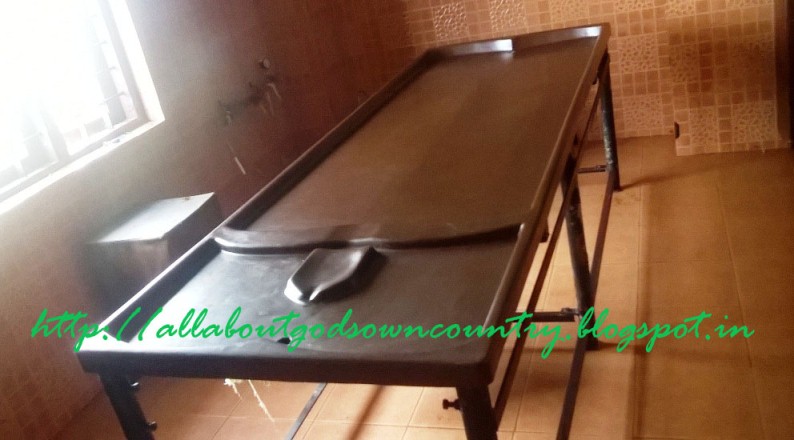



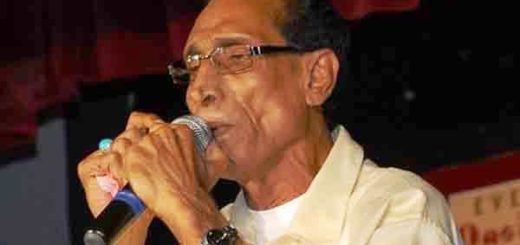
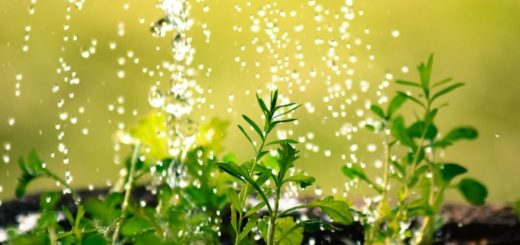
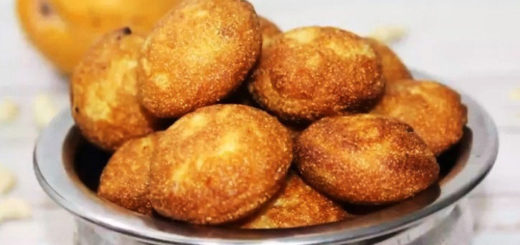








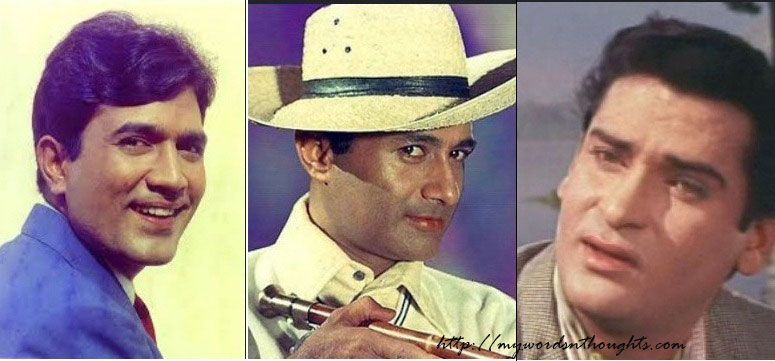

Great article! Where I can the best panchakarma treatment in Kerala?
Available across Kerala. You can search online. Government Ayurveda hospitals also provide it. You can choose monsoon season, June-July-August to get better results